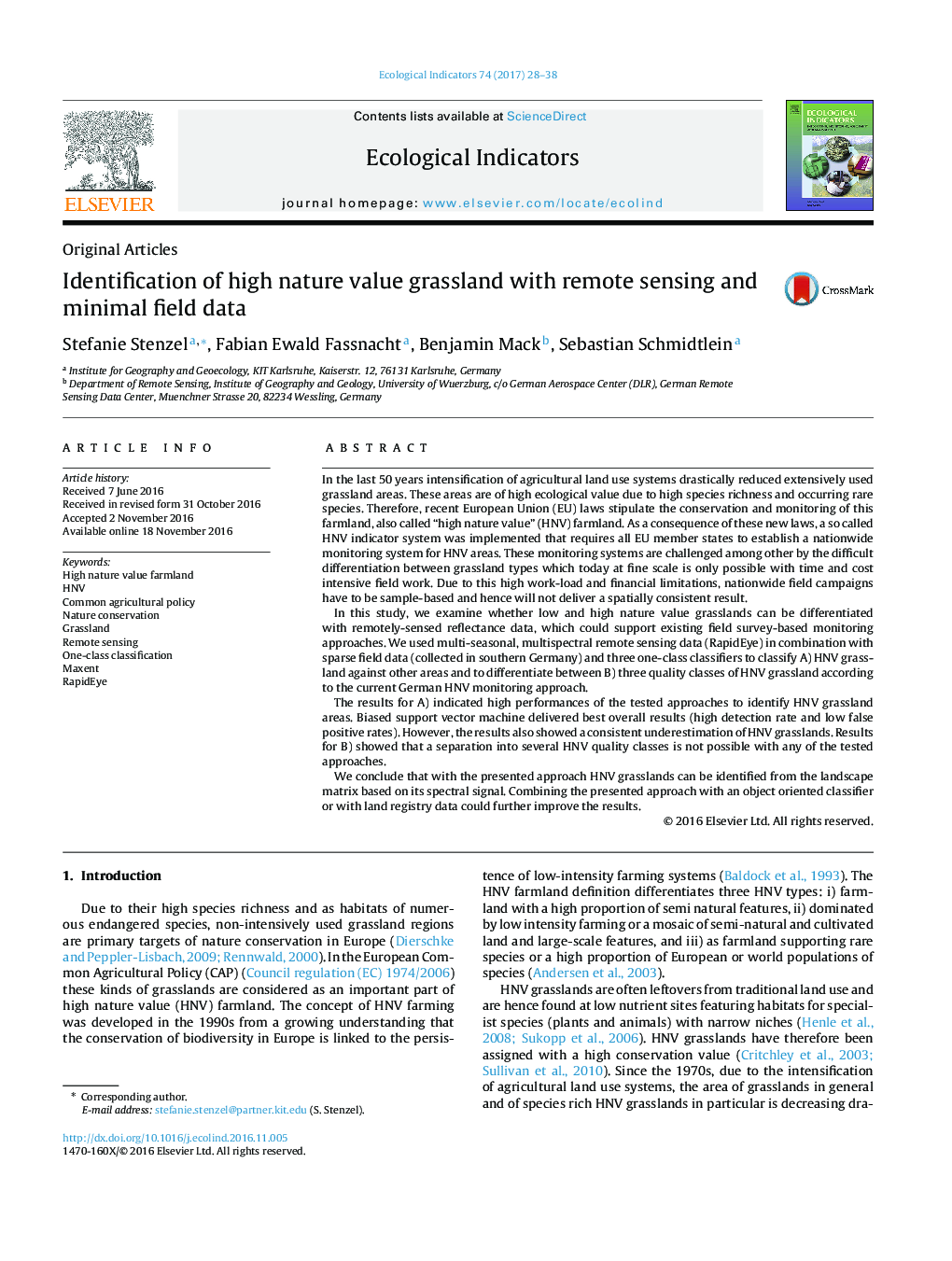| کد مقاله | کد نشریه | سال انتشار | مقاله انگلیسی | نسخه تمام متن |
|---|---|---|---|---|
| 5741832 | 1617128 | 2017 | 11 صفحه PDF | دانلود رایگان |
- We used multi-seasonal, multispectral remote sensing data in combination with sparse field data to identify high nature value grassland.
- There seems to be a signal in the reflectance of grasslands that makes it possible to differentiate high nature value grasslands from intensively used grasslands.
- Several oneclass classifers have been tested, BiasedSVM and Maxent are our winners.
In the last 50 years intensification of agricultural land use systems drastically reduced extensively used grassland areas. These areas are of high ecological value due to high species richness and occurring rare species. Therefore, recent European Union (EU) laws stipulate the conservation and monitoring of this farmland, also called “high nature value” (HNV) farmland. As a consequence of these new laws, a so called HNV indicator system was implemented that requires all EU member states to establish a nationwide monitoring system for HNV areas. These monitoring systems are challenged among other by the difficult differentiation between grassland types which today at fine scale is only possible with time and cost intensive field work. Due to this high work-load and financial limitations, nationwide field campaigns have to be sample-based and hence will not deliver a spatially consistent result.In this study, we examine whether low and high nature value grasslands can be differentiated with remotely-sensed reflectance data, which could support existing field survey-based monitoring approaches. We used multi-seasonal, multispectral remote sensing data (RapidEye) in combination with sparse field data (collected in southern Germany) and three one-class classifiers to classify A) HNV grassland against other areas and to differentiate between B) three quality classes of HNV grassland according to the current German HNV monitoring approach.The results for A) indicated high performances of the tested approaches to identify HNV grassland areas. Biased support vector machine delivered best overall results (high detection rate and low false positive rates). However, the results also showed a consistent underestimation of HNV grasslands. Results for B) showed that a separation into several HNV quality classes is not possible with any of the tested approaches.We conclude that with the presented approach HNV grasslands can be identified from the landscape matrix based on its spectral signal. Combining the presented approach with an object oriented classifier or with land registry data could further improve the results.
Journal: Ecological Indicators - Volume 74, March 2017, Pages 28-38
